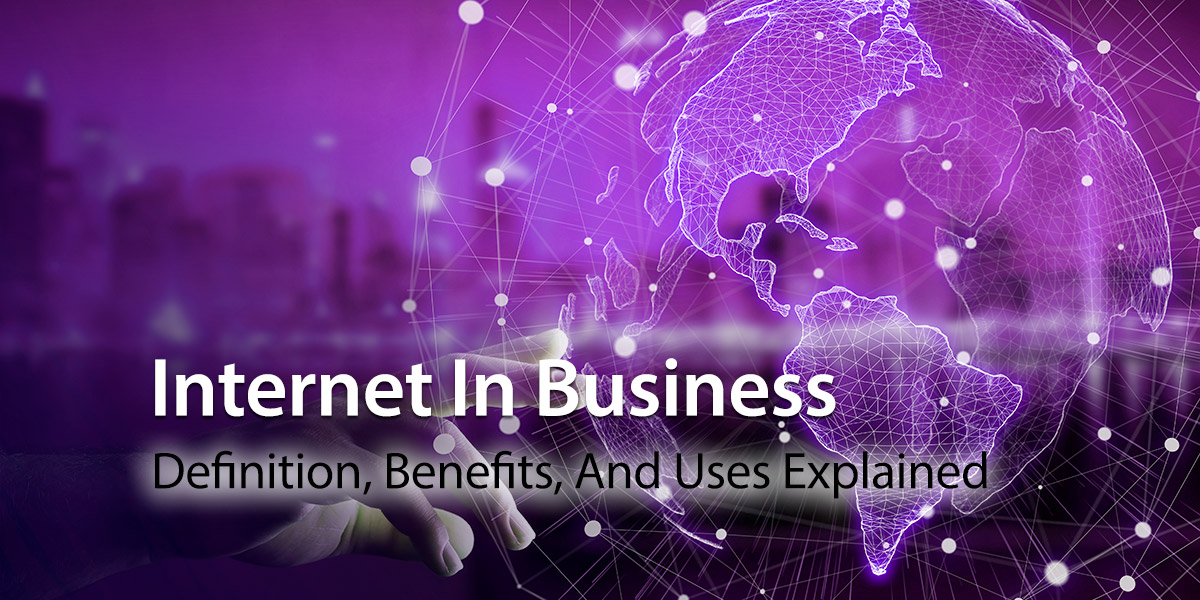“Traditional intranets are dead — modern intranets are alive and well,” declared research and consulting firm Gartner in a recent report. Intranet software has indeed come a long way since its first appearance in the 1990s. Intranet platforms are thriving in today’s digital workplace and are the powerhouse behind internal communication, knowledge management, and employee engagement. Today’s post is a timely review of the importance of the intranet in business today. We explore the benefits of an intranet for modern organizations. We also look at how businesses use the intranet platform as an all-in-one solution for the digital workplace.
So, let’s get started with a definition of modern intranets and how they differ from the traditional intranets of old.
What Is An Intranet In Business?
An intranet site is a private network hosted by a cloud provider or company web server. It’s accessible only to the organization’s employees.
Traditional intranets were often little more than glorified libraries: a central repository for all company information. Fast forward 30 years, and it’s a totally different story.
A modern intranet is a dynamic, flexible, secure network. Yes, it’s an ideal tool for all your document management. However, nowadays, a corporate intranet offers so much more.
Employees have centralized access to all daily work tools, from knowledge-sharing and collaboration tools to internal communication and instant messaging. Your intranet solution also doubles as an internal social networking platform – crucial for remote workers and distributed teams.
Furthermore, seamless integration with enterprise apps like Google Workspace and Salesforce makes it a comprehensive solution. While a dedicated mobile app ensures a connected workforce, regardless of location.
Why Is Intranet Software So Important To Business?
We’ve just scratched the surface of the benefits of an intranet. The bottom line is that the intranet platform offers a ton of benefits. Here are the headlines:
Efficient Information Sharing
Employees can share information, resources, and company knowledge more efficiently and effectively from one central location. The intranet’s unlimited file storage makes document sharing straightforward.
Streamlined Collaboration
Staff can work together online on projects and documents, regardless of location and time zone. Collaboration tools like private forums, employee directories, instant messaging, alerts, and task management enable employees to collaborate effectively.
Improved Internal Communications
From startups to Fortune 100 companies, good communication is at the heart of every successful business. And intranet software will take your internal communications to another level.
Company leadership can share news and critical updates in various engaging ways. Take your pick from podcasts, interactive blogs, vlogs, and team or company news feeds. Create a single source of truth and reach all workers wherever they are.
Enhanced Employee Engagement
There’s no doubt that employee disengagement costs businesses. According to the latest data from Gallup, it’s a whopping $1.1 trillion worldwide problem.
Use the company intranet to supercharge employee engagement. Employee participation in two-way internal communications, employee recognition programs, and professional development resources are crucial. Turn employees into content creators with the intranet’s CMS. Invite employee feedback and track your progress on employee engagement with surveys and polls.
Better Knowledge Management
Knowledge may be power but it’s only really powerful when shared. The collective knowledge of the workforce is one of the company’s most valuable assets. And that’s why effective knowledge management is critical.
Step up knowledge-sharing intranets. Capture knowledge with customizable forms, create a searchable knowledge base, and share knowledge in podcasts, explainer videos, SOPs, and more. The intranet platform is an all-in-one knowledge management tool.
Intranet Solutions: Pitfalls To Avoid
Before we move on, it’s vital to acknowledge some of the disadvantages of an intranet. Many of these are associated with traditional intranets rather than modern versions. However, an awareness of some of the pitfalls ensures you avoid the mistakes others have made before you.
Information Is Hard To Find
Some intranets have ended up being dumping grounds for all company information. Poor organization and outdated content make it difficult for employees to find what they need without wading through countless pages.
Dealing with this potential problem is an easy fix. An advanced intranet search, user-friendly interface, intuitive navigation, and robust content curation improve information discoverability.
Deskless Workers Are Left Out Of The Loop
One of the criticisms of traditional intranets is that they’re only available on desktops. Up to 80 percent of the global workforce is deskless. Think retailers, nurses, delivery drivers, and service technicians. That means a massive chunk of the workforce is potentially left out in the cold.
Not every worker has a desktop, but they do have a mobile. Modern intranets come with mobile access as standard. Many providers, like MyHub, also offer a specialized mobile app. On-the-road and deskless workers enjoy all the same fantastic features as office-based ones.
Costs Can Add Up
Do-it-yourself intranet software like WordPress often requires plug-ins and add-ons to get the functionality you need. These can come with a hefty price tag. Other options, like SharePoint, require technical expertise that’s often beyond SMEs. Many resort to using external consultants to build and maintain the software.
Modern intranet providers use pre-built templates to simplify setup. The coding and basic design are provided. All you need to do is drag-and-drop content, branding, and logos for a customized solution.
What Is The Business Value Of The Corporate Intranet?
Demonstrating the return on investment (ROI) is crucial to any decision in business. Calculating the ROI of your company intranet involves comparing costs with the savings achieved.
The benefits of an intranet we outlined above will see you achieve savings across the board. Improved productivity, more efficient working, enhanced internal communications, knowledge sharing, and collaboration will impact the bottom line.
On the other side of the ledger, you’ll have software costs, ongoing licensing fees, hardware, implementation, maintenance, and training.
Most companies find the benefits far outweigh the costs. It’s a simple equation: The company intranet will generate more value compared to the cost. Implementation is a no-brainer.
How Do Companies Use A Company Intranet?
The modern intranet is a flexible platform, making it a must-have for the digital workplace. Here, we share some of the ways companies use intranet solutions. The list reflects current intranet best practices, so use these examples to inform your intranet strategy. And remember, the software is so versatile that you can tick all the following boxes simultaneously.
Internal Communications Hub
Do away with information overload and unopened emails. Instead, share company announcements, team or corporate news, and information in real-time and keep the entire company on the same page. Push notifications and @ mentions ensure critical messages get through. Team chat and the employee directory connect your people. And two-way communication tools get everyone involved in the conversation, including deskless workers.
Knowledge And Information Sharing Platform
Employees manage and organize critical information and resources from one central location. No more wasting time searching through hard drives, emails, or file-sharing platforms. The modern intranet makes finding and sharing company know-how easy.
The spinoffs to your business of more efficient management of knowledge are enormous. Knowledge-sharing is streamlined, and there’s less duplication of effort and wasted time and effort.
Employee Experience Platforms
Many organizations are taking the intranet to another level and creating an employee experience platform. From onboarding to offboarding, the software supports workers at every step of the employee journey, empowering employees with the tools they need.
The hallmarks of an employee experience platform are consumer-grade communications, employee engagement tools, like employee feedback surveys, and social features to connect employees. It directly addresses the drivers of employee dissatisfaction, boosting your recruitment and retention efforts. The Great Resignation may be slowing down, but hanging on to your brightest and best is still a priority.
Human Resources Portal
Your private intranet can transform how HR works. Employee onboarding is streamlined with automated formfilling, checklists, and self-learning tools. Quick access to resources enables employees new to the organization to hit the ground running.
An intranet page dedicated to internal vacancies helps reduce recruitment costs and provides workers with more career opportunities.
Furthermore, self-service tools and automated workflows substantially reduce the HR admin burden. Online expense claims, leave requests, and feedback forms allow employees to manage their own admin tasks and paperwork.
Project Management And Collaboration Facilitator
The intranet serves as your all-in-one project management and collaboration tool, enabling project teams to work together more efficiently.
Features like document sharing and version control allow employees to collaborate on documents in real-time. You can create a private internal network with the project forums feature to exchange ideas, insights, and internal or external resources. Automated task management ensures everyone stays on track with key deliverables. And team members can communicate privately with a dedicated # channel on team chat.
Integration Portal
One of the best features of modern intranets is that they provide employees with single sign-on access to other enterprise apps. Your intranet integrates with CRM systems, HR management platforms, Google Drive, and Microsoft 365, among others. Integration means information and data flow seamlessly between all platforms, streamlining workflows and improving your overall efficiency.
Internal Social Networking Platform
Creating a sense of community among employees is more challenging in distributed teams. The intranet platform can help bridge the gap. Employees can communicate with coworkers and share ideas using the social features we all know and love, including shares, comments, likes, and emojis. Discussion forums, team chat, and employee directories help create bonds among different teams and departments, regardless of location.
Positive Company Culture
An engaging and positive workplace culture is the glue that binds the entire company, giving workers a sense of purpose and belonging. And intranet platforms are the perfect vehicle for developing a meaningful company culture.
Improved communication about company vision and values helps ensure your people are aligned with the corporate strategy. Give your people a voice with feedback surveys and two-way communication channels.
Value them as individuals by supporting their learning and development. Online courses, webinars, podcasts, and other resources help employees grow their skills and knowledge.
Promote a company culture of appreciation with an employee recognition program. And why not use team chat for peer-to-peer shoutouts? A thank you from coworkers is a powerful tool. It not only boosts recognition, but it also highlights the good behaviors you want others to follow.
Intranet In Business: Final Thoughts
While traditional clunky intranets may be dead and buried, the modern dynamic version is thriving. Every organization is unique and faces different challenges. However, the flexibility of the modern intranet means that the software is the perfect solution to whatever challenges you face – from communications to remote working.
About MyHub
We are a leading provider of cloud intranet software. Our platforms power the digital workplace in organizations of all shapes and sizes. With a beautifully designed, engaging interface, MyHub is easy to set up requiring no technical expertise.
Find out how our intranet software can transform your business with a free demo or 14-day trial.











0 Comments